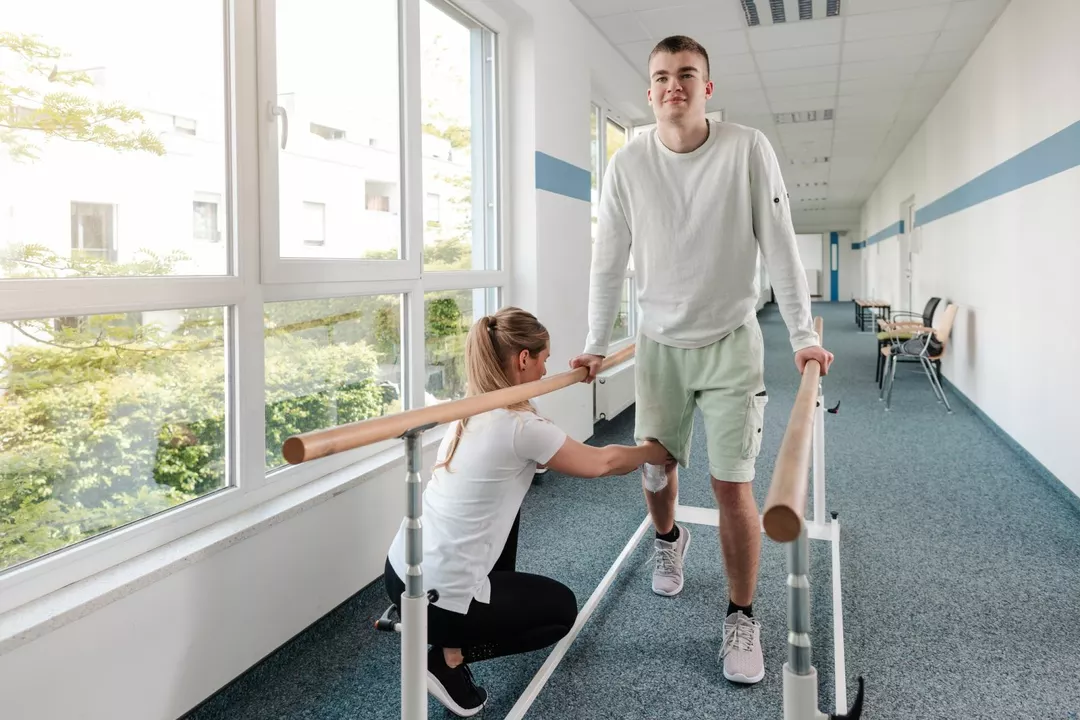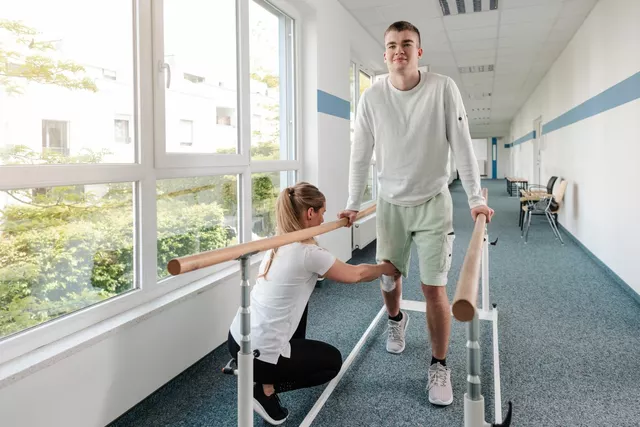Understanding Pulmonary Embolism and Its Impact on the Body
Pulmonary embolism (PE) is a serious medical condition that occurs when a blood clot blocks one or more of the pulmonary arteries in the lungs. This can lead to a lack of oxygen in the bloodstream, resulting in damage to the lungs and other organs. As someone who has experienced a pulmonary embolism, I understand the importance of proper treatment and recovery. In this article, I will discuss the role of physical therapy in pulmonary embolism recovery and how it can help individuals regain their strength, mobility, and overall quality of life.
Initial Treatment and Stabilization After a Pulmonary Embolism
After being diagnosed with a pulmonary embolism, the primary goal of treatment is to stabilize the patient and prevent further clot formation. This typically involves medications such as anticoagulants or thrombolytics, which help to break down the clot and prevent new ones from forming. Once the patient is stable, the focus shifts to recovery and rehabilitation, which often includes physical therapy. As someone who has gone through this process, I can attest to the importance of a comprehensive recovery plan that addresses all aspects of physical and emotional well-being.
Assessing Physical Limitations and Establishing a Baseline
One of the first steps in the physical therapy process is to assess the patient's current physical limitations and establish a baseline for progress. This involves evaluating factors such as strength, flexibility, endurance, and balance. As a patient recovering from a pulmonary embolism, it was crucial for me to understand my limitations in order to set realistic goals for my recovery. My physical therapist worked closely with me to create a personalized plan that addressed my specific needs and helped me regain my independence.
Improving Cardiovascular Endurance and Lung Function
One of the primary goals of physical therapy in pulmonary embolism recovery is to improve cardiovascular endurance and lung function. This is achieved through a combination of aerobic exercises and breathing techniques that increase blood flow and oxygen delivery to the lungs. As a patient, I found that these exercises not only helped me regain my physical stamina but also played a critical role in reducing my risk of developing another blood clot in the future.
Strengthening and Conditioning Exercises
Another important aspect of physical therapy for pulmonary embolism recovery is strengthening and conditioning exercises. These exercises target the muscles that have been weakened due to inactivity or muscle imbalances caused by the clot. As a patient, I found that these exercises helped me regain my strength and mobility, allowing me to return to my daily activities with confidence. Additionally, by improving my overall muscle strength, I was able to reduce the strain on my cardiovascular system and improve my overall health.
Balance and Coordination Training
Balance and coordination training is often incorporated into physical therapy programs for pulmonary embolism recovery. This training helps patients regain their stability and confidence in performing daily tasks and activities. As a patient, I found that balance and coordination exercises not only improved my physical abilities but also had a positive impact on my mental well-being, as I felt more secure in my movements and less anxious about the possibility of falling or injuring myself.
Education and Lifestyle Modifications
Physical therapy for pulmonary embolism recovery also involves educating patients about lifestyle modifications that can reduce their risk of future clot formation. This may include recommendations for diet, exercise, and stress management. As a patient, I found that learning about these lifestyle changes and implementing them into my daily routine played a crucial role in my long-term recovery and overall health.
The Importance of a Supportive and Collaborative Approach
As someone who has experienced a pulmonary embolism and undergone physical therapy for recovery, I cannot stress enough the importance of a supportive and collaborative approach between the patient, medical team, and physical therapist. Open communication and a shared understanding of the patient's goals and limitations are key to creating a successful recovery plan. In my experience, working closely with my physical therapist and medical team allowed me to regain my strength, mobility, and confidence, ultimately leading to a full and healthy recovery.



Comments
Physical therapy after a PE is a must‑do, not optional.
I’ve read up on clot prevention, and early mobilization really cuts down on recurrence risk. Getting the blood flowing early helps the lungs clear residual micro‑clots and improves oxygenation. The therapists usually start with gentle diaphragmatic breathing and short walks. It’s a low‑impact way to rebuild stamina without overtaxing the heart.
When you’re fresh out of the hospital, the idea of exercising can feel intimidating, but think of it as a series of tiny victories that add up. First, your therapist will assess your baseline-how far you can walk, how deep you can breathe, and where you feel shortness of breath. From there, they’ll design a step‑by‑step plan that blends breathing drills, light resistance work, and balanced mobility drills. You’ll start with simple seated marches, then progress to standing heel‑toe walks while focusing on expanding your rib cage. The breathing exercises aren’t just for lungs; they also engage the core, stabilizing your posture and reducing the strain on your cardiovascular system. Each session is intentionally short-often 20 to 30 minutes-so you don’t push into fatigue, which could trigger anxiety about clot formation. As you log each session, you’ll notice your heart rate recovering faster, and you’ll be able to climb a flight of stairs without gasping for air. The therapist will also teach you how to monitor your exertion using the talk test: if you can hold a conversation, you’re in the right zone. Consistency is the secret sauce; hitting your routine five days a week beats an occasional marathon workout. Don’t forget the importance of hydration and a balanced diet, because your body needs nutrients to rebuild the damaged vessels. Stretching your chest and shoulders helps open the airway passages, making each breath feel deeper. Over weeks, you’ll see measurable gains in your six‑minute walk test, a standard metric for PE recovery. The mental boost is huge too-seeing progress on paper translates into confidence in daily life. Lastly, keep the communication open with your therapist; if something feels off, they can tweak the plan before it becomes a setback. Stick with the program, celebrate the small wins, and you’ll reclaim your freedom faster than you imagined.
Oh wow, a step‑by‑step “tiny victories” guide-because we’ve all got time to schedule a mini‑marathon before dinner. Guess the next episode will be “how to taste‑test your oxygen levels.” 🙄
Statistically, patients who engage in structured physiotherapy within the first two weeks post‑PE show a 30 % improvement in VO₂ max compared to those who remain sedentary. The mechanisms involve enhanced endothelial function and reduced inflammatory markers, which together lower the likelihood of another thrombotic event. In practice, combining aerobic intervals with inspiratory muscle training yields the best outcomes. It’s also important to monitor D‑dimer levels periodically, as declining values correlate with functional recovery. Don’t forget to adjust anticoagulant dosing based on renal function during the rehab phase to avoid bleeding complications while maintaining clot prevention.
Great points! Let’s take that data and turn it into a doable plan-start with 5‑minute brisk walks, then add 2‑minute inspiratory breath holds, and gradually build up. Remember, the goal is steady progress, not perfection. Keep tracking those D‑dimer trends with your doc, and stay on top of your meds. You’ve got this, one step at a time.
Honestly, hearing numbers like “30 % improvement” feels like a lifeline after weeks of uncertainty. I can picture myself finally catching my breath on a sunset hike, feeling the wind in my lungs without fear. The thought of balancing meds and exercise sounds daunting, but your encouragement makes it feel achievable. I’m ready to lace up those shoes and give my heart a chance to soar again. 🌅💪
Sounds like a lot of work for someone just trying to get back to Netflix.
True, the rehab can feel like a marathon, but think of it as adding bright colors to a grayscale canvas-each session paints a little more vibrancy into your life. 🎨 Keep at it, and soon the “just Netflix” days will be a well‑earned reward.